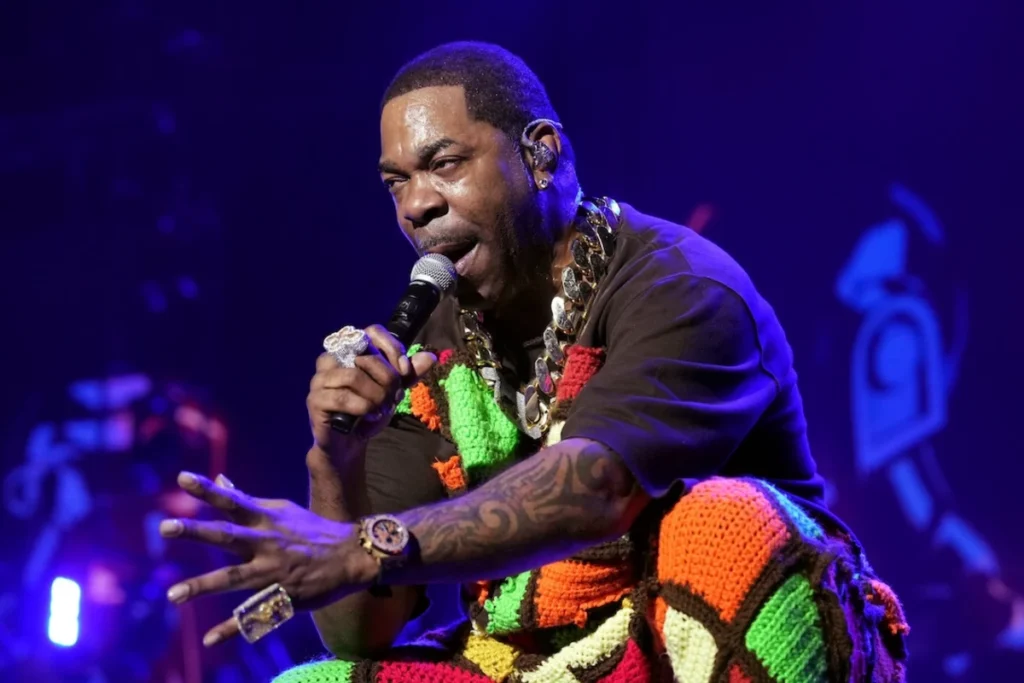Fans of the Swedish pop titans ABBA the world over were blown away when the group re-emerged from a long hibernation to announce they would be reuniting for a brand new album, their first in nearly 40 years. The wait is finally over, as Voyage has officially hit streaming platforms for pop obsessives to devour. But while famed groups like The Beatles, The Rolling Stones, Led Zeppelin and Michael Jackson all hold these monolithic and immovable places within the pop-music consciousness, ABBA are a group that strangely needs a reintroduction to many who are only familiar with some of their biggest hits.
The group started in the early ’70s as a way to showcase the talents of songwriting partners Benny Andersson and Björn Alvaeus, with their then-romantic partners Agnetha Fältskog and Anni-Frid Lyngstad on vocals. Add their initials together and you not only get the band name “ABBA,” but you also get a group who have sold nearly 400 million records worldwide, with their 1992 greatest-hits compilation Gold setting a record for remaining on the U.K. 100 charts for 1,000 weeks.
With eight full-length albums from 1973 to 1981—all stuffed to the gills with bonafide hits—it’s hard to think of many other groups who have changed the face of pop music over the past 50 years quite like ABBA. With bands like ELO and even Steely Dan getting the poptimist treatment, ABBA deserve to be given all of the flowers that are rightly theirs while they are still around. After all, the announcement of Voyage came with the sad news that the group would finally be breaking up—that is, after one last Tron-style “ABBA Arena” tour that will have each band member digitally de-aged as holograms to “perform” songs both new and old. It’s a move that is both very puzzling and extremely ABBA before they power down their legendary hit-making machine.
We’ve cataloged ABBA’s best songs here at Paste in the past, but for those newcomers who need more of an overall primer on the band, here are the 10 best introductory tracks to get you onboard.
1. “Ring Ring”
If you listen to ABBA’s debut album, you get the sense that the group hadn’t really sorted out how they would conquer the world just yet. Like a group of jewel thieves who got nabbed on their first attempt, but left a clear-cut path for themselves back into the vault when they blew the joint, 1973’s Ring Ring showed glints of promise. Both Andersson and Ulvaeus handle more vocals than they would further down the line, but it’s songs like the lead-off title track “Ring Ring,” sung by Fältskog and Lyngstad, that exhibited the formula they would strike gold with on their next few albums. The song injects equal parts of Beatles or Kinks proto-riff rock with elements of Phil Spector girl-group harmonies and romance. Many of their hits would improve upon this formula, but “Ring Ring” set the high bar that ABBA would work towards for the rest of their long career.
2. “Don’t Shut Me Down”
We took a look at their very first hit—now let’s take a peek at their most recent one. With 28 million plays already since it showed up on Spotify a few months back, it’s safe to say that ABBA fans have been more than enthusiastic about the Voyage single “Don’t Shut Me Down.” And for good reason, as the song contains all the hallmarks of what made them such an otherworldly hit-making force. It’s as if all four members re-emerged from the spaceship in Close Encounters of The Third Kind with all of their pop instincts perfectly preserved. Not only is it a pristine example of their powers, but the lyrics also clear up any mystery as to why the band disbanded in the first place. “And you wonder why I’m here today / And so you should, I would,” Fältskog sings on the track, adding, “When I left, I felt I’ve had enough,” before she explains that they have been reloaded like “a dream within a dream that’s been decoded.” With a familiar, bouncy, disco-inspired rhythm, songs like this are a good reminder of the influence and impact ABBA left behind when they first said goodbye and how important this final return is today.
3. “Knowing Me, Knowing You”
Between the two massive hits on their landmark 1976 album Arrival, “Dancing Queen” and “Fernando,” you could easily overlook the other 10 tracks that float in their orbit. But the infectious “Knowing Me, Knowing You” is one of the best brokenhearted pop-rock songs outside of Fleetwood Mac’s Rumours. The more you begin to understand ABBA’s genius, the more you realize that, much like Brain Wilson’s sandbox period or Wayne Coyne’s “Race for the Prize,” that there is a profound sadness lurking behind even their most jubilant-sounding songs. Reading the song’s opening lyrics, it’s about as emotionally fraught as a song can get. “No more carefree laughter, silence ever after,” Lyngstad sings, “Walking through an empty house, tears in my eyes, here is where the story ends, this is goodbye.” This is all before the triumphant chorus barges in to wipe any tears from your eyes. That balance is where ABBA thrives. You almost forget you were just crying as you bob your head.
4. “Take a Chance on Me”
There’s a scene in The Office where Ed Helms’ character Andy Bernard gets all of the members of his college a cappella group Here Comes Treble to conference-call in to sing their version of the ABBA song “Take a Chance on Me” in order to ask out his co-worker Angela. As Andy takes the lead, you can see the mental decline and desperation behind his eyes as he waits for an answer. It was the perfect song choice, in that the hook is so air-tight and catchy that it almost takes on the maddening qualities of “Row-Row-Row Your Boat” or “100 Bottles Of Beer On The Wall.” As a college songwriting professor explained to me once, if a song gets stuck in your head, love it or hate it, it’s still a good song. Appearing on their fifth album, ABBA: The Album, this song has the luxury of exhibiting those nursery-rhyme qualities, but is also a perfect example of how ABBA can shoehorn in hooks that you may not even notice until you have no other choice. For instance, a fourth of the song is devoted to a dreamlike bridge, with lead vocalist Agnetha Fältskog almost whispering her romantic pleas before it kicks back into its singsongy hook. It’s a bop that should come with a caution tag reading, “Warning: This song may get stuck in your head for days.”
5. “One of Us”
ABBA were able to fold so many different genre explorations into their dense pop constructions that they become almost too difficult to dissect. Much like The Beatles, at a certain point, it’s just easier to compare other artists to the Swedish hit-factory. Critics can use tags like “ABBA-like” when describing a good chorus or tight song structure, and no one would second-guess them. But who would ever think to associate the group with reggae? On their final album before their recent resurrection, 1981’s The Visitors, the group delivered one of their darkest and most adventurous releases. While it’s chock-full of earworms—this is ABBA, after all—no other song quite exemplifies how experimental the band were willing to go like “One of Us.” It starts with a swell of strings before settling into a synth-heavy plastic dub, with a fat bass line from Mike Watson. While this song could possibly be the template for future Ace of Base hits decades later, it’s hard not to be in awe of how effortlessly the group were able to swim these deep waters. They easily pulled off using the influence without being too obvious or, really, any hint of perspiration in the process. It feels weird to say it, but isn’t that how the best reggae feels?
6. “Gimme! Gimme! Gimme! (A Man After Midnight)”
In 2005, Madonna found herself in the “off-ramp” phase of her pop-dominating relevance. After three decades of hits, it was bound to happen! It had been seven years since Ray Of Light laid waste to all of the challengers to her throne and in a chance to recapture her fading glory, she looked to the OG dance-pop architects ABBA to provide some inspiration. Even though she sampled the infectious flute and string instrumental hook from the 1979 Voulez-Vous cut “Gimme! Gimme! Gimme!” on her own undeniable club hit “Hung Up,” Madonna was unable to best the source material. Starting with a moody guitar intro that sounds akin to what Cheap Trick would later pen on “Downed,” the song launches into an infectious robo-disco romp that simply doesn’t quit, and still sounds like the future today. When ABBA aimed for the dance floor, it was never as simple as it seemed. Their intention was never to dizzy the senses with unrelenting rhythm. But like the best dance music-makers, they paid close attention to each layer with such care you would have no choice but to lose yourself as they piled them on.
7. “SOS”
When ABBA approach some of their best choruses, it seems like they take the opposite approach as most other pop-leaning groups. Where many others use a big singalong chorus as a way to pay off tension built up in the verses as a form of gratification, ABBA, at their best, write choruses that overshadow everything else once they are introduced. With one of their biggest hits, “SOS,” off their self-titled 1975 album, the song fits in two brief verses before the two-minute mark. After that, its long and revealing chorus gets its claws in and doesn’t let go until the track is over. “So when you’re near me, darling, can’t you hear me, S.O.S.,” they sing in unison, “The love you gave me, nothing else can save me, S.O.S.” It’s a simple, streamlined plea for the restorative powers of love that has been an anthem for downtrodden singles in karaoke rooms around the world for nearly 50 years.
8. “Mamma Mia”
Listen, I’ve never seen the Meryl Streep-starring jukebox musical Mamma Mia!, or its sequel Mamma Mia! Here We Go Again. But to my ears, the lead track from ABBA’s 1975 self-titled album is good enough to spawn a long-running radio murder-mystery program or a series of self-help books. The hooks alone justify the song’s spread into other facets of pop culture. At this time, both the films and the wildly successful musical on which they were based probably elevated this song to being ABBA’s most recognized, on paper. Listening to it without the context tied to it, it’s hard to deny the perfect pop construction of “Mamma Mia.” It’s written in such perfect symmetry, with a pre-chorus and chorus that kick back into brief verses that act like the brief moments when you sink into a trampoline before launching back up into the sky. It’s a true testament to the songwriting partnership of Andersson, Alvaeus and manager Stig Anderson, who were on an unbeatable pop-writing streak at that time. When the song finishes its final chorus and goes back into the plinky piano and guitar harmonies it started with, it then begins to fade out, rather than come to a stop. It’s almost like the band were about to launch back into another go-around, but they had to ease out for our benefit. It really could go on for double its 3:33 runtime to at least save you from inevitably getting up to press “replay.” Mamma Mia, here we go again.
9. “The Winner Takes it All”
While ABBA lead singer Agnetha Fälkstog is a true talent who shines across the group’s towering discography, she has never delivered a vocal as powerful and devastating as her jaw-dropping performance on “The Winner Takes It All.” Included on the band’s 1980 album Super Trouper, the song was written in the wake of Fälkstog’s divorce from chief songwriter Björn Alvaeus. While Alvaeus has denied writing the song about how shitty he felt having to be around Fälkstog after their marriage got dunked into the trash bin, all the signs are there when you read the lyrics closely. “??The gods may throw a dice / Their minds as cold as ice / and someone way down here / loses someone dear,” she sings with heavy sorrow before the resolution of the song’s chorus: “The winner takes it all. The loser has to fall.” It’s hard not to think how far Alvaeus’ heart must have sunk into his chest when he heard Fälkstog deliver those words with her soaring vibrato. The song maintains a minimal structure, not veering too far from its foundational chords from verse to chorus. But as each verse passes by, the orchestration and drama build to such staggering emotional highs that it’s hard to take with a straight face. ABBA weren’t aiming for an earworm with “The Winner Takes It All,” they were out to destroy your heart. They just happened to do both in the process.
10. “Dancing Queen”
As soon as you hear the piano slide into the first disco-infused bars of “Dancing Queen,” the song could stay on that vamp for three minutes without introducing anything and still be a hit. But as the song kicks off its transcendent chorus, it’s a true “game over” moment for the newly converted, and can turn around the mood of even the most vacant and desolate dive bars. After years of trying, ABBA reached the pop holy grail with this mammoth single from 1976’s Arrival. Over 600 million plays on Spotify alone speaks for itself. But dissecting the immaculate production and pinpoint-precision performances throughout the track should be a part of Hit-making 101 classes for as long as music is made by humans.
Like Bruce Springsteen’s “Dancing in the Dark” or “Royals” by Lorde, “Dancing Queen” is an uplifting pop epic full of yearning that gives its audience permission to be something greater than they currently are. When you hit the town on Friday night and the lights are low, “anybody could be that guy,” they tell you, because the “night is young and the music’s high.” The old adage is that you should dance like no one is watching. But what ABBA are saying is that when we’re all dancing in darkness together, who gives a shit anyways? Why not go for broke? The dance floor is the great equalizer for love, and the 17-year-old “Dancing Queen” is out to find her king if it takes all night. If all the bozos on the floor don’t realize what they’re missing, they can just sit back and watch as she has the time of her life.
Pat King is a Philadelphia-based journalist and host of the In Conversation podcast at Ears to Feed. He releases his own music with his project Labrador and is a tireless show-goer and rock doc fanatic. He recently took up long-distance running, which he will not shut up about. You can follow him at @MrPatKing.




